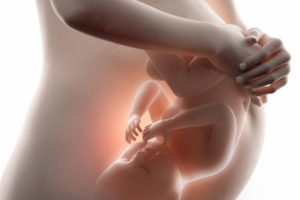Childbirth Preparation

Women are truly gifted because we have the ability to carry a developing fetus, give birth to an infant and nurture the newborn with the perfect sustenance – breast milk. It should be no surprise, then, that with this gift comes the responsibility of making sure that the body that produces and bears life, is prepared to do so. Lifestyle, environmental toxins, nutritional status and even a woman’s mental status can have enormous effects on the health of her children. With this in mind, it is easy to see that becoming pregnant is the most important decision a woman will make in her lifetime and childbirth preparation is vital to both you and yours to come.
Studies have shown that if a woman partakes in unhealthy lifestyle choices, such as eating processed foods, using recreational drugs, drinking alcohol or smoking while she is pregnant, she is affecting herself, her growing child and the developing gametes within the female child. By choosing not to take care of herself, she is, therefore, directly affecting up to three generations.
Below is a description of the aspects of childbirth preparation that are addressed at the Health and Healing Center. A careful intake is done to evaluate your environmental toxin exposure, nutritional status, and gastrointestinal health. Assistance is offered if you feel you would like to improve your mental outlook. We discuss various treatment plans and you will choose how you would like to prepare for childbirth, according to your schedule and needs.
Environmental Toxin Exposure | Nutrition | Gastrointestinal Health | Mental Health
Environmental Toxin Exposure
- Xenoestrogens (a.k.a environmental hormones or endocrine disrupting chemicals) – introduced 70 years ago into the environment by industrial, agricultural and chemical companies. Xenoestrogens mimic estrogen and cause hormone disruption, contributing to endometriosis, precocious puberty (unusually early onset of puberty), infertility, and miscarriages. Common ones are listed below, but it is important to realize that xenoestrogens are ubiquitous and are found in our food supply (i.e. DDE and other pesticides in animal fat, hormones used to promote the growth of animals and milk production, phytoestrogens, antimicrobials), cosmetics (parabens and phthalates), pesticides and herbicides (i.e. dichlorodiphenyl trichloroethane or its metabolites), heat stabilizers and chemical catalysts (i.e. tributyltin), plastic contaminants (i.e. phthalates, bisphenol A), and pharmaceuticals (i.e. diethylstilbestrol and 17α-ethinylestradiol, an oral contraceptive).
- Solvents (toluene, xylene, and styrene) – found in hair dyes, dry cleaning, paints, glues, gasoline, health care products and household cleaning products, to name a few. Solvents have been linked to miscarriages.
- Sodium laureth sulfate (SLES) and sodium lauryl sulfate (SLS) – used as detergents, surfactants and foaming agents. Sulfates are found in nearly all hand and body soaps, shampoos, scalp treatments, hair color, toothpastes, laundry detergents, facial cleansers and moisturizers. Sulfates can cause diarrhea and nausea if swallowed, respiratory tract irritation and allergic respiratory reaction if inhaled, and it irritates the skin and oral mucosa.
- Triclosan – antibacterial and anti-fungal compounds added to soaps and mouthwashes. Triclosan is absorbed through the skin and the lining of the mouth and has been detected in human milk samples and in urine at high concentrations. Triclosan persists in the environment, contributes to the increasing rates of bacterial resistance, has endocrine disrupting properties and causes adverse health problems in humans and wildlife species.
- Bisphenol-A (BPA) – found in plastic bottles, the lining of metal food cans, and dental sealants. BPA has estrogenic activity and has been strongly correlated with miscarriages.
- Phthalates – plasticizers (chemicals added to plastics to make them soft and flexible), which are found in make-up, supplements and medications, plastic wrap and plastic storage containers, the lining of metal cans and automobile parts. That new car smell – phthalates. Phthalates mimic estrogen, influence breast cell growth, and are linked to female and male infertility and miscarriages.
- Polychlorinated biphenyl (PCB) – previously used as plasticizers, adhesives and in electrical transformers. PCBs are no longer used in the U.S., but they persist in the environment. Fish, especially farmed fish are the major source, as well as meat and dairy products. PCBs are linked to miscarriage.
- Parabens – used as preservatives by cosmetic and pharmaceutical industries. In cosmetics they are labeled as: butylparaben, ethylparaben, methylparaben and propylparaben. They are found shampoos, conditioners, facial and shower cleansers, shaving gels, deodorants, cosmetics, sunscreens, toothpaste, and lotions. Parabens are absorbed through skin and they are endocrine disruptors because they mimic estrogen. They have been found in high concentrations in breast tumors, and parabens have been shown to increase skin aging and DNA damage.
- Fluoride – used in toothpaste to prevent cavities, in cookware, pesticides, and pharmaceutical drugs. Fluoride is also added to most municipal water sources in the United States. Water fluoridation is the practice of adding industrial-grade fluoride chemicals to water, for the purpose of preventing tooth decay. Most developed nations, including all of Japan and 97% of Western Europe, do not fluoridate their water. Data from the World Health Organization reveals that there is no discernible difference in tooth decay between the minority of western nations that fluoridate water, and the majority that do not. Even if your community does not fluoridate, you are exposed to fluoride if you consume processed beverages and foods as they are produced with fluoridated water. Here are just a few of the consequences of excessive fluoride ingestion:
- Fluoride competes with iodine since they are both halogens so fluoride exposures could be contributing to the increased prevalence of under-active thyroid.
- Prolonged, excessive exposure to fluoride can cause a debilitating bone disease known as skeletal fluorosis.
- Fluoride has been shown to increase blood glucose levels and impair glucose tolerance.
- Fluoride damages gastric mucosa at relatively low doses.
- Fluoride’s ability to damage the brain is one of the most active areas of fluoride research today. In the past three decades, over 100 studies have found that fluoride exposure can damage the brain.
- There are many other environmental toxins, including: Polyaromatic hydrocarbons from unvented gas stoves, cigarette smoke and auto exhaust; formaldehyde from furniture, carpet and cabinetry made of pressed wood; VOCs (volatile organic compounds) from room fresheners, candles, household cleaners, carpet, auto exhaust, paints and building materials, insecticides on plants and pets; preservatives, pesticides, herbicides, antibiotics, genetic modifications and hormones in our food supply.
It is important to remember that although studies have shown that specific chemicals have been shown to cause cancer, endocrine disruption, nervous system dysfunction, mood disorders and miscarriage, it is unknown what the combination of the chemicals we are exposed to is doing to our bodies and to our unborn children. We know that toxins can cross the placental and blood-brain barrier, passing to your baby in the womb. Toxins from the mother are also passed to infants during breastfeeding. Therefore, it is imperative for women in childbirth preparation to detoxify their bodies, avoid environmental toxins as much as possible and eat foods conducive to a healthy body and the development of a healthy fetus.
Nutrition & Childbirth Preparation

- Preconception – It takes about 4 months for eggs and sperm (gametes) to develop. The quality of gametes is influenced by nutritional status, environmental exposures and stress. One nutrient that is especially important is folic acid, of which 400 micrograms daily is recommended to prevent serious birth defects of the spinal cord (such as spina bifida) and the brain (anencephaly). However, some people aren’t able to metabolize folic acid to its active form, in which case it is important to take methyltetrahydrofolate. Ask you doctor which is best for you.
- Fetal development – Stem cells are rapidly dividing into different cell lines, which requires methylation. Methyl donors are methionine (high in eggs, sesame seeds, Brazil nuts, fish, meats) and choline (high in animal products, cruciferous vegetables, quinoa, amaranth and almonds). Cofactors needed are folic acid (high in leafy vegetables, legumes and eggs) and vitamin B12 (animal derived foods, including fish and shellfish, meat, poultry, eggs, milk, and milk products) and vitamin B6 (chickpeas, fish, chicken, potatoes and other starchy vegetables, and non-citrus fruit). In girls, this stage is also important for the development of gametes (eggs).
- Puberty – in males the development of spermatogenic organs.
Studies have shown that susceptibility to the following diseases in adult life is strongly influenced by maternal dietary intake of methyl donors and cofactors.
- Diabetes
- Glucocorticoid excess
- Hyperlipidemia
- Hypertension
- Insulin resistance
- Metabolic syndrome
- Obesity
As you can see, it is imperative for a woman to eat highly nutritious foods and take supplements to ensure her nutritional status supports her health during childbirth preparation; the growth and development of her baby; and the health of her children’s children.
Childbirth Preparation: Maternal & Gastrointestinal Health
- Probiotics produce antibiotic-like, anti-fungal and anti-viral substances, which defend against invaders and stimulate the body’s immune system to respond appropriately.
- Probiotics produce organic acids to keep the guts pH around 4.0-5.0, which is unfavorable for pathogenic bacteria. The growth of probiotics occupies the available space and keeps opportunistic, pathogenic bacteria and yeasts from growing, which also inhibits the formation of pathogenic bacterial toxins and their damaging effects to the gut wall. Damage to the GI tract allows undigested foods to leak out, which causes an inflammatory response in the body.
- Without the probiotics to help break them down fully, foods can become toxic substances, such as casomorhpines and gluteomorphines that interfere with brain and immune system function.
- In addition to protecting them, probiotics also provide the food necessary for the cells of the gut lining.
Probiotics are imperative for the healthy function of the GI tract and science is just beginning to understand their importance during the childbirth preparation process.
What is important for this discussion is that the health of the mother and father’s GI system determines the health of their baby’s gut because the mother and father give their bacteria to the newborn. Unfortunately, many people have pathogenic bacteria growing in their gut because of antibiotic and antifungal use, long-term use of analgesics (aspirin, ibuprofen, etc.), steroids and contraceptive pill use. Chronic stress, diets high in simple carbohydrates and fiber from grains, prolonged fasting and overeating can also lead to an imbalance of gut flora, or dysbiosis as it referred to.
Babies have a sterile gut lining until birth, when the baby receives bacteria from the mother as it travels through the birth canal and in breastfeeding. If a baby receives pathogenic bacteria and yeasts from the mother and does not receive probiotics from the mother during breastfeeding, the results can be devastating. It is believed by many that the dysbiosis in the gut is the key to the high rate of autism, ADHD, dyspraxia, dyslexia, depression and schizophrenia.
